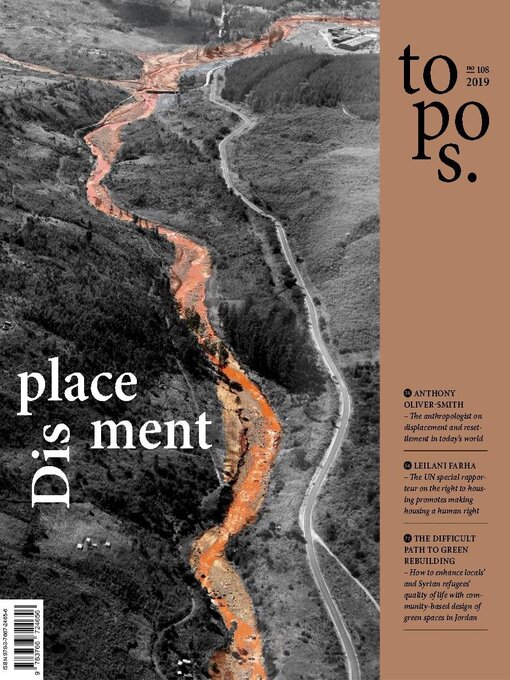Topos is a must-have for successful landscape architects, planners, urban designers and architects all over the world.The monothematic issues provide a global overview of innovative projects, new developments and trends in the profession. Be part of the worldwide community of Topos readers!
COVER
Republic of small Things
OPINION • Lior Steinberg Urban Planner and Co-Founder of Humankind
Jan Stadelmann, Daia Stutz
Günther Vogt
Singapore
Outcasts and Intruders • The Earth’s diameter is 12,700 kilometres. That may sound like a lot, but it also means that the Earth's surface is limited. However, humanity seems to be ignoring this fact in its pursuit of economic growth. This imposes suffering on both nature and animals, as their natural habitat is being destroyed as a result. In his series “The Empty World”, photographer Nick Brandt highlights the displacement of animals as a result of human activities and illustrates the nightmarish world that awaits us if we do not respond in time.
“Displacement is a process of uprooting, however it happened.” • The anthropologist Anthony Oliver-Smith shares insights from his decades of research on disasters, displacement and resettlement with topos. Displacement can be better understood if a differentiation is made between it and migration, and if there is a distinction between ways of coping with it or adapting to it.
Juxtaposing permanent and temporary Landscapes • What is the role of landscape architecture in a post-disaster context? How can planning respond to the displacement of people who lost their homes and to communities who find themselves thrown into an environment they are no longer able to recognise? Maybe the theories of American landscape architect Garrett Eckbo and his design projects for temporary and emergency landscapes can give advice to an earthquake-affected region in Italy.
No Calm after the Storm • To this day, the residents of the City of Tacloban in the Philippines are trying to find ways to live a normal life after Typhoon Haiyan hit the country in 2013 – harder than any other typhoon ever before. To this day, research is conducted to draw lessons from the local post-disaster management to use the lessons learnt to cope with effects of environmental disasters wordwide. One of the most important findings is: community engagement and social cohesion are needed to recover.
Resettling Grantham • In 2011 a flood disaster in the Australian state of Queensland led to loss of life and catastrophic damage. The rural town of Grantham was hit particularly hard. The state government initiated an unprecedented recovery and resettlement plan for a new development located in the vicinity of the existing town. Which recovery pathways did impacted residents choose, and what motivated them to do so?
No Place to fall to • Los Angeles’ skid row is a world of its own and, on top of that, an ambiguous one. It's a place where homeless and vulnerable people find – at least – a place to stay. But it’s a fact that they are displaced in an area that is eschewed by others. However, affordable housing in L.A. is a scarce good and gentrification does not stop even for the home of the poorest. Is this the beginning of the displacement of the displaced?
“Housing is the link between one’s dignity and one’s ability to survive in our world.” • Housing is in a global crisis. Adequate and affordable housing is a rare good – in the Western world, and in even more urgent ways in developing countries. What are the reasons that particularly cities all over the world are becoming increasingly unlivable and unaffordable? Do citizens and societies have to bear the evictions, the displacement and inaccessibility that come with the financialization of the housing market? Or is there a chance to reverse this trend? We had the...

